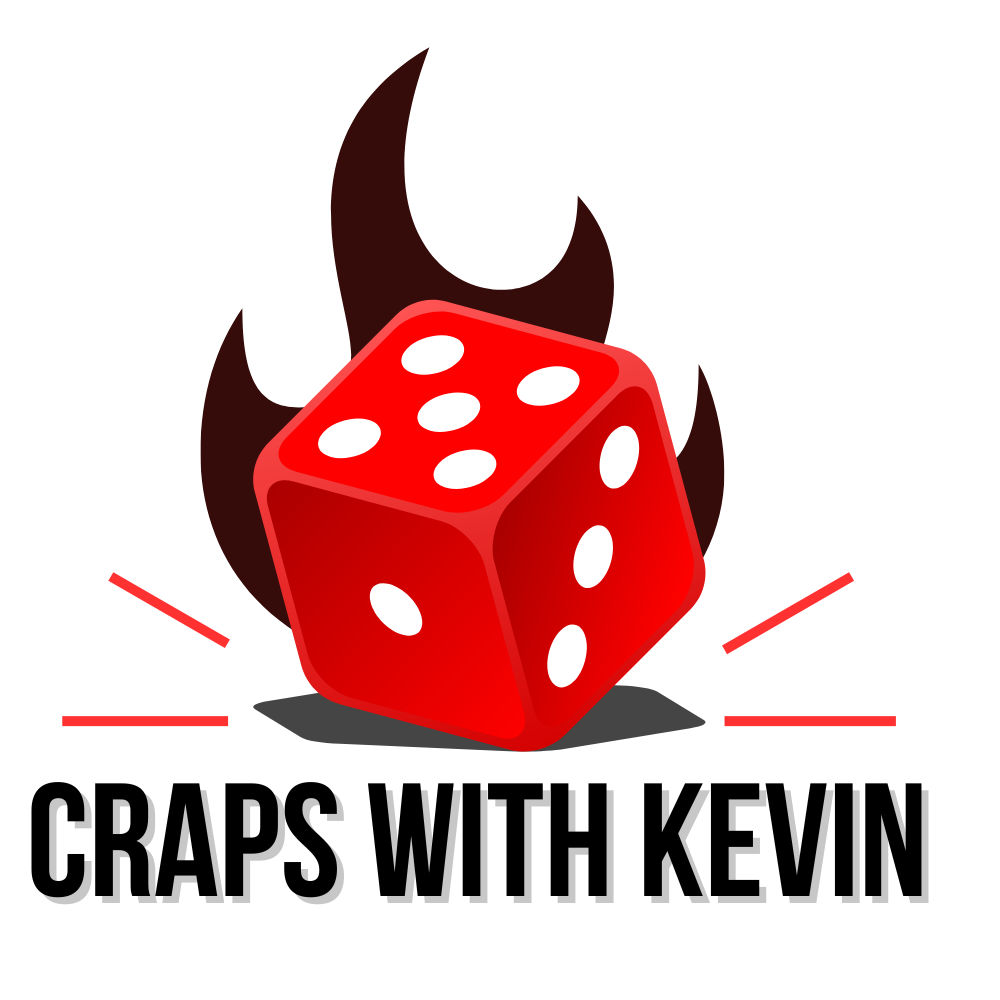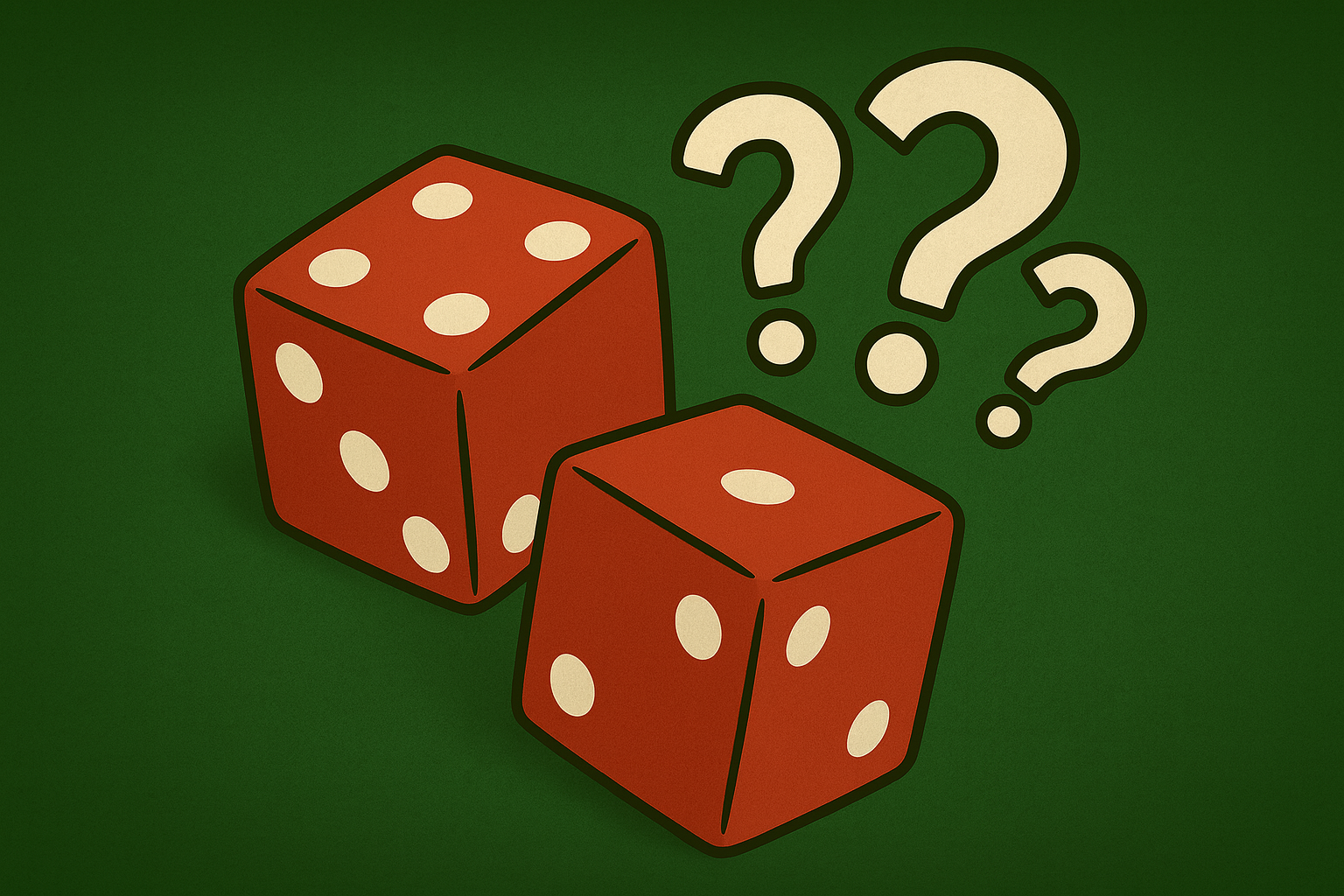If you want to play craps smart, you’ve got to know the math behind the dice. This article breaks down the craps dice pyramid—showing why some numbers hit more than others—and how that affects your bets at the table. Whether you’re brand new or brushing up your skills, this is a game-changer.
Why Craps Dice Pyramid Probabilities Matter in Craps
Craps might seem chaotic at first, but it’s really a game of math. Every roll of two dice has 36 possible outcomes—and those outcomes are not evenly distributed.
Some numbers hit more often simply because there are more combinations that produce them. That’s why smart players favor the bets tied to the most common totals.
Let’s look at what’s actually possible…
The Craps Dice Pyramid Combinations
Here’s the classic craps dice pyramid based on two six-sided dice:
| Total | Combinations | Odds |
|---|---|---|
| 2 | 1 (1+1) | 2.78% |
| 3 | 2 (1+2, 2+1) | 5.56% |
| 4 | 3 | 8.33% |
| 5 | 4 | 11.11% |
| 6 | 5 | 13.89% |
| 7 | 6 | 16.67% |
| 8 | 5 | 13.89% |
| 9 | 4 | 11.11% |
| 10 | 3 | 8.33% |
| 11 | 2 | 5.56% |
| 12 | 1 (6+6) | 2.78% |
🔺 Key takeaway:
The number 7 is the king—statistically, it rolls more than any other number. But 6 and 8 come in right behind with 5 combinations each.
What Happens in 100 Rolls?
On average, here’s what you can expect if you roll the dice 100 times:
- 7 will hit about 17 times
- 6 and 8 will each hit about 14 times
- 5 and 9 hit about 11 times each
- 4 and 10 hit about 8 times each
- 2 and 12 barely show—about once each
📌 This is why experienced players prioritize placing bets on the 6 and 8. They hit more frequently and offer solid payouts—especially compared to the flashier, riskier bets.
Combination ≠ Certainty
Just because 6 and 8 have better odds doesn’t mean they’re guaranteed to hit.
👉 Each roll of the dice is completely independent.
There’s no “hot streak” baked into the math. The dice don’t remember what just happened—and no one can predict what’s coming next.
However, tracking how many rolls occur between 7s can help with awareness. Statistically, a 7 appears every 6 rolls, so if it’s been a while, your guard should go up. This isn’t superstition—it’s just watching for potential rhythm shifts in play.
6 and 8 vs. 7 – The Real Math That Matters
In the craps dice pyramid, although 7 hits most often, 6 and 8 combined actually hit more often together. Think of it this way:
- 7 = 6 combinations
- 6 + 8 = 10 combinations (5 each)
By placing bets on both 6 and 8, you’re covering a third of the dice outcomes (10 out of 36), giving you a very solid shot at consistent payouts.
📌 That’s why Kevin’s Disciplined Player System builds around the 6 and 8.
Why the 4 and 10 Look Better Than They Are
Players love 4 and 10 because they pay double (2:1) when bought. But they only have 3 combinations each—meaning they hit much less frequently.
It’s okay to buy the 4 and 10 when you’re using house money, but beginners should focus on the bets that hit most often, not the ones that “look” exciting.
Smart Bets vs Risky Bets – Quick Reference Using the Craps Dice Pyramid
Here’s a quick cheat sheet:
| ✅ Smart Bets | ⚠️ Risky Bets |
|---|---|
| Pass Line + Odds | Hardways |
| Place 6 or 8 | Any 7 (One-Roll) |
| Come Bets + Odds | Field (Short-term only) |
| Buy 4 & 10 (selectively) | Horn Bets, C&E |
Final Thoughts
Understanding the craps dice pyramid is like having x-ray vision at the craps table. Once you know the math, you can start playing like a true student of the game—not just a lucky tourist.
Stick with me here at Craps With Kevin, and we’ll keep building your knowledge together. 🎲
Related:
What Is the Pass Line Bet in Craps? | Beginner’s Guide
Golden Arm: A Probabilistic Study of Dice Control in Craps by Donald R. Smith UNLV







Leave a Reply